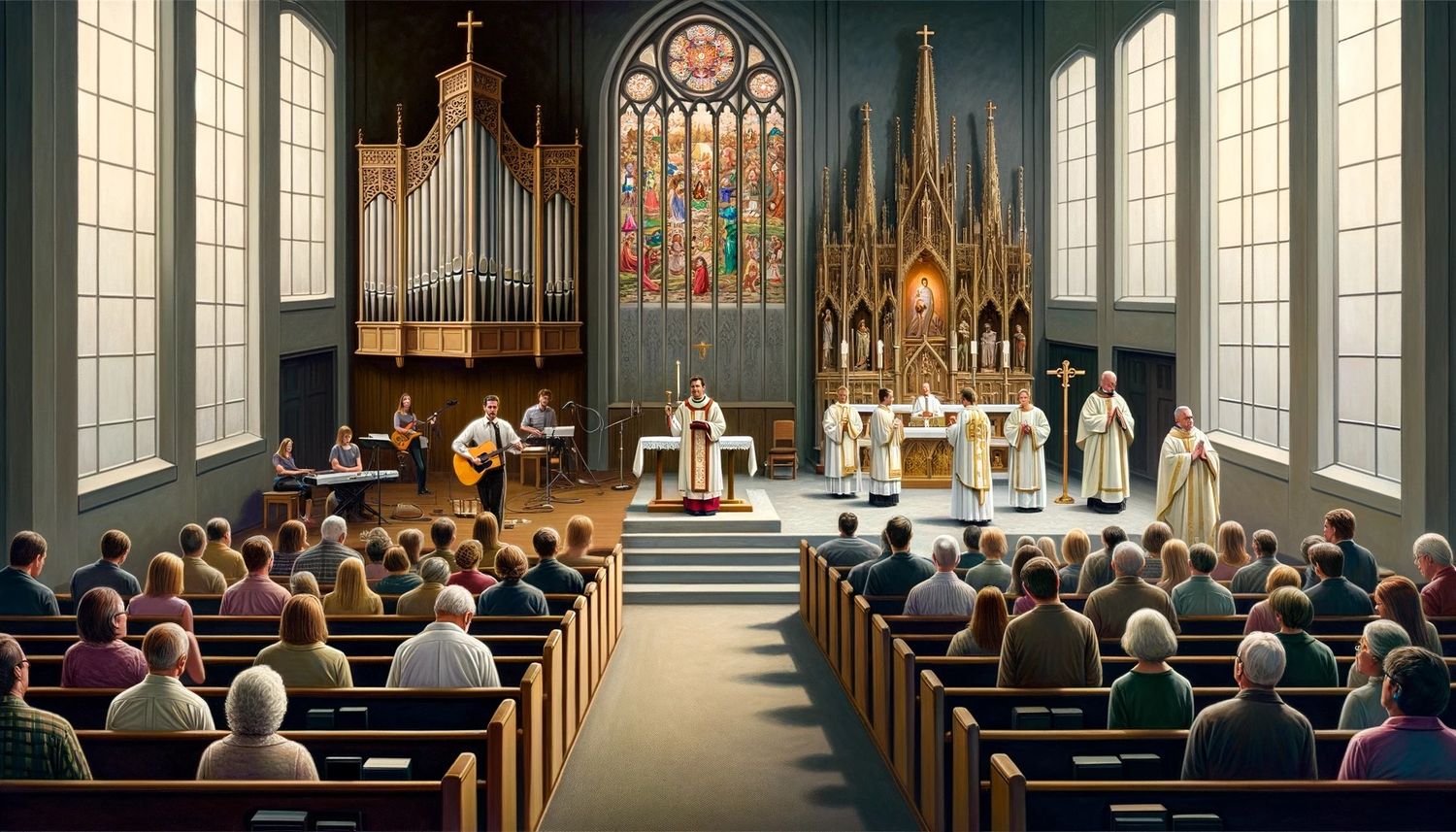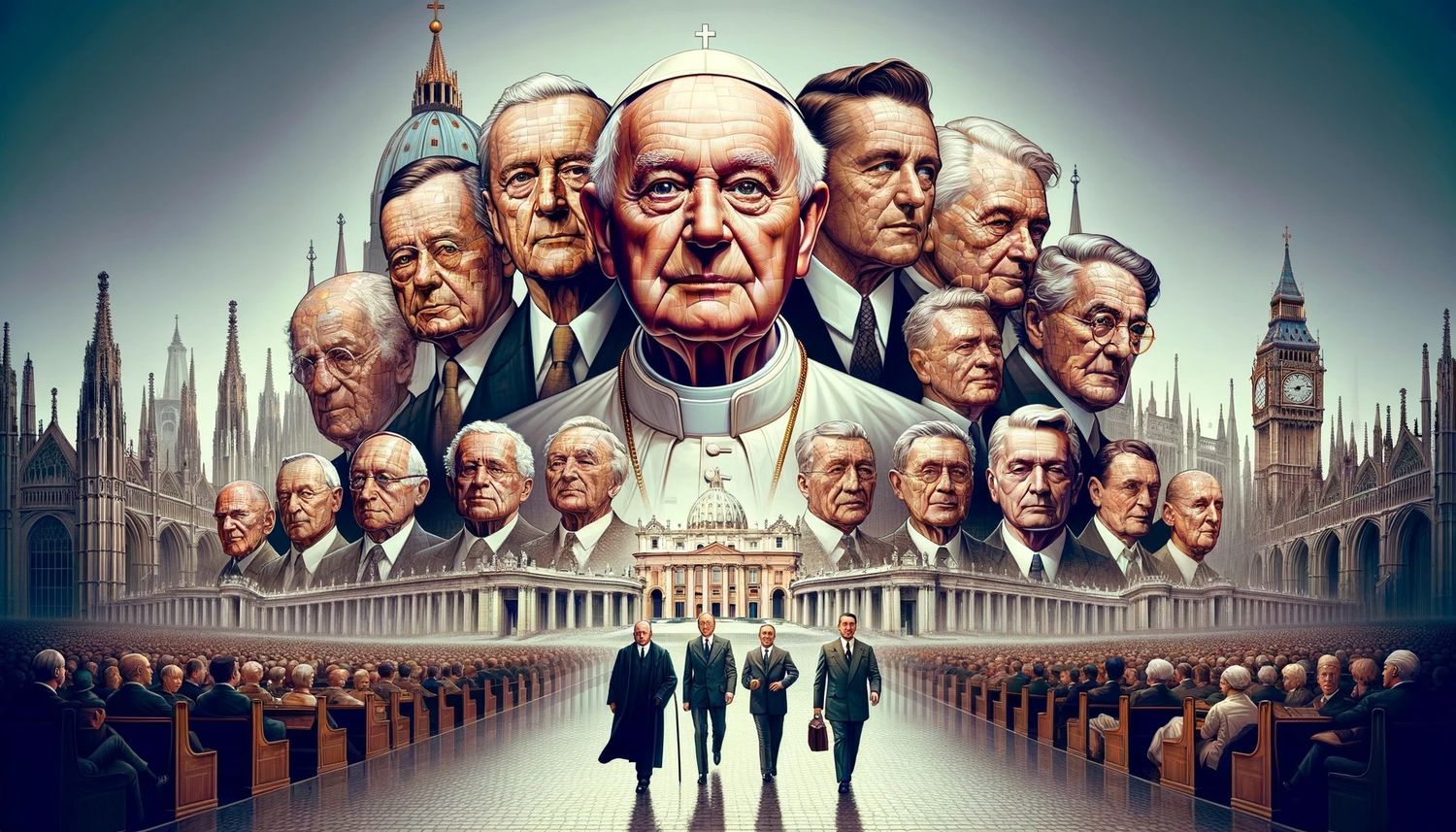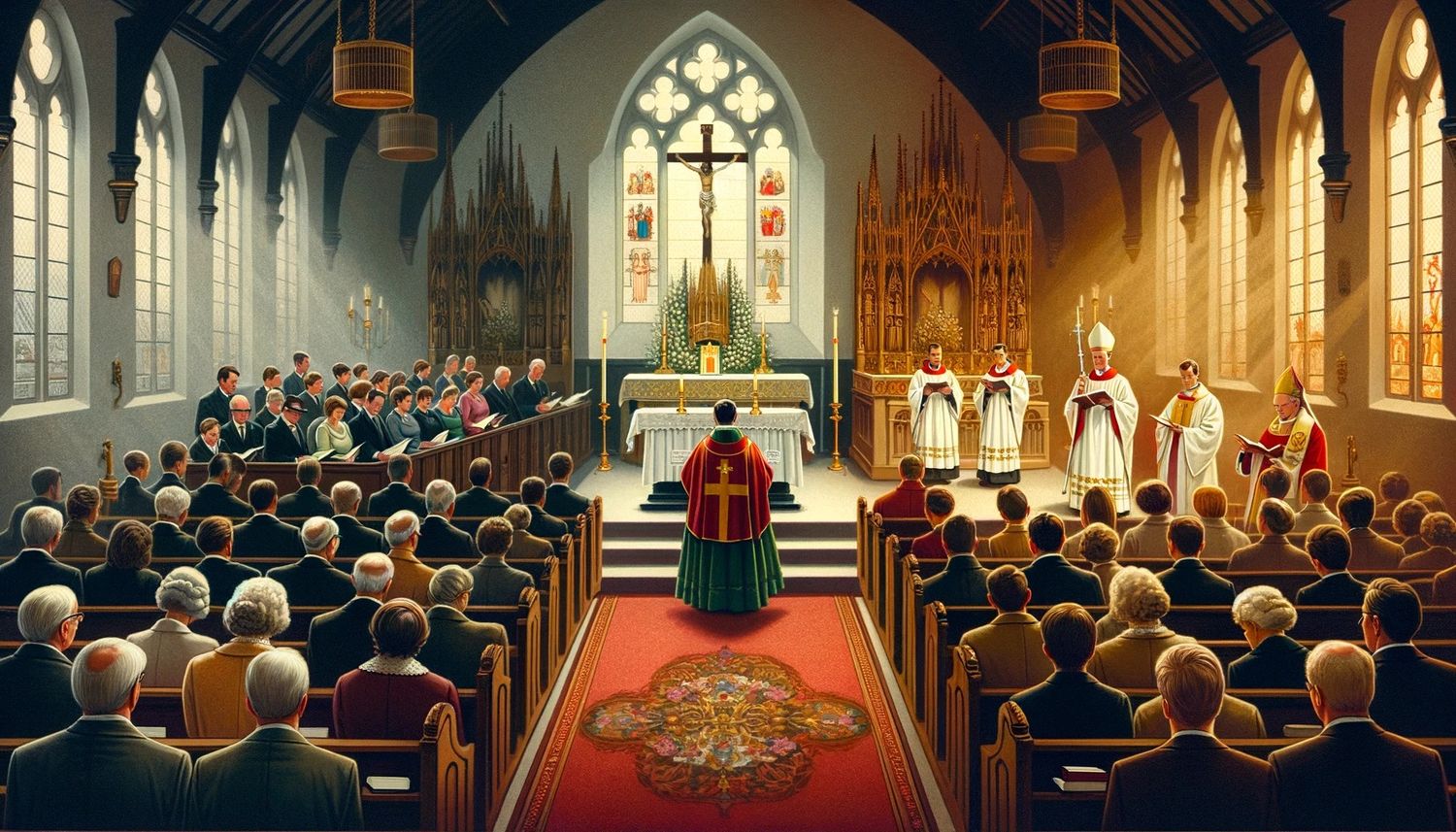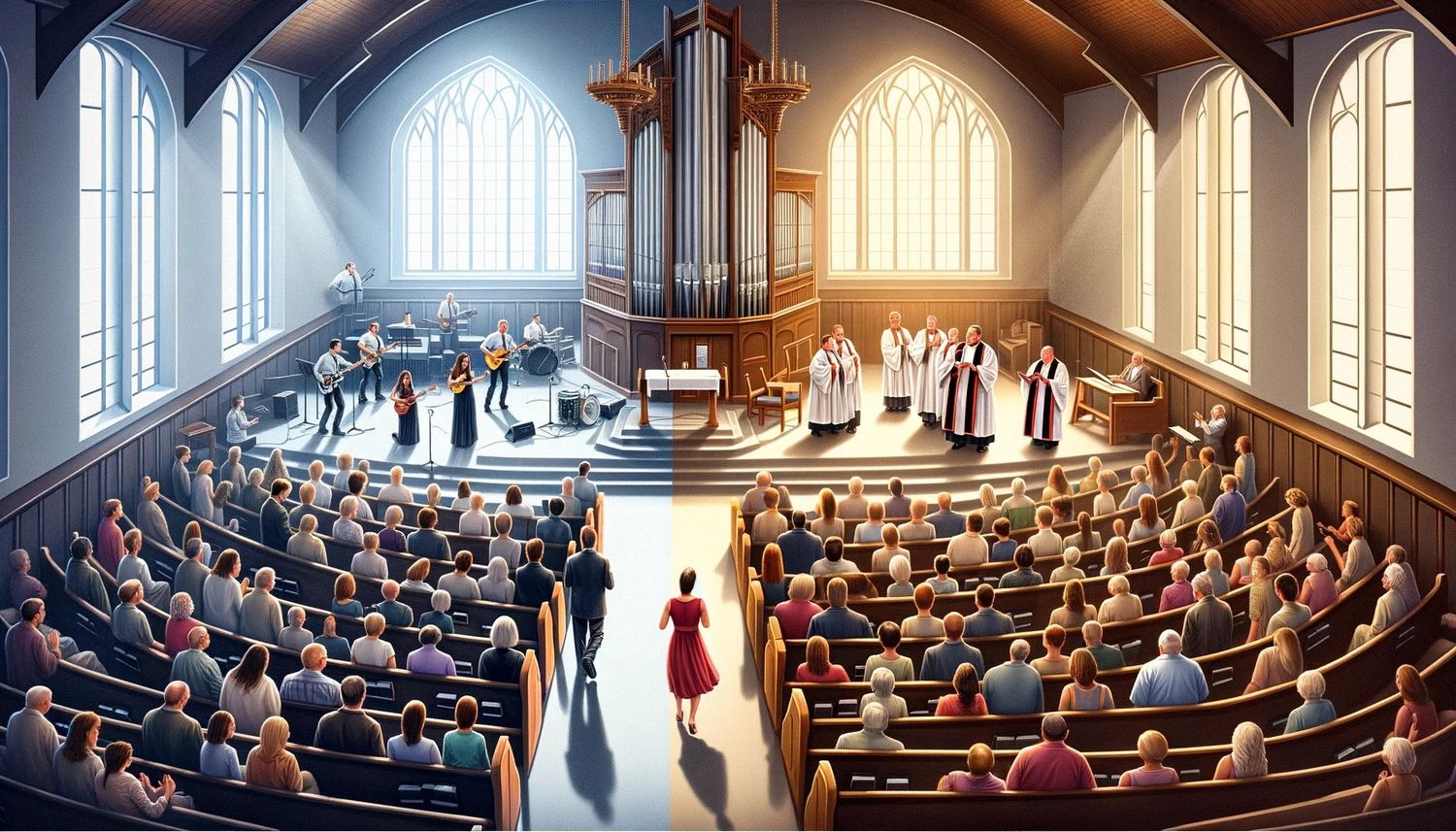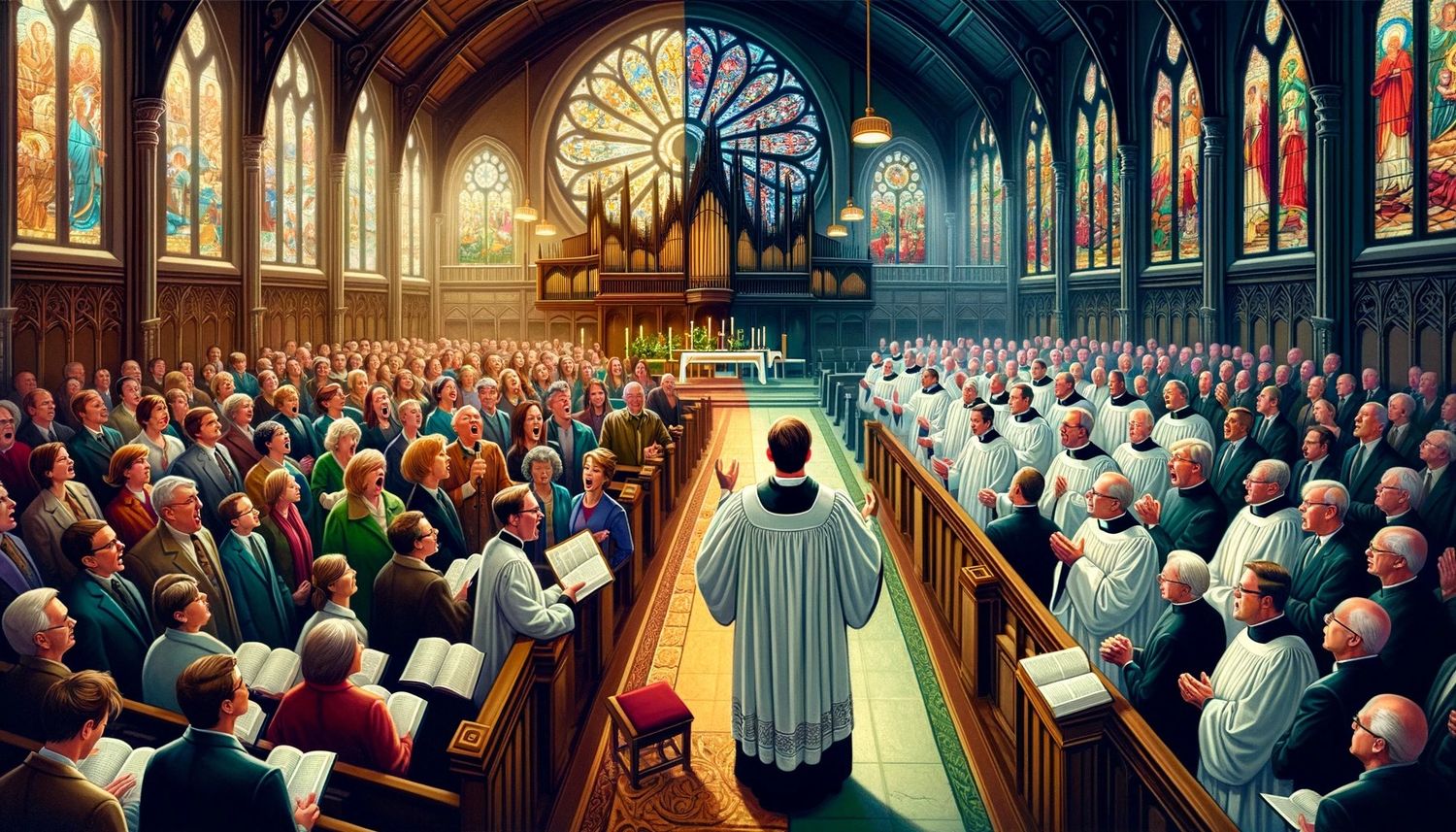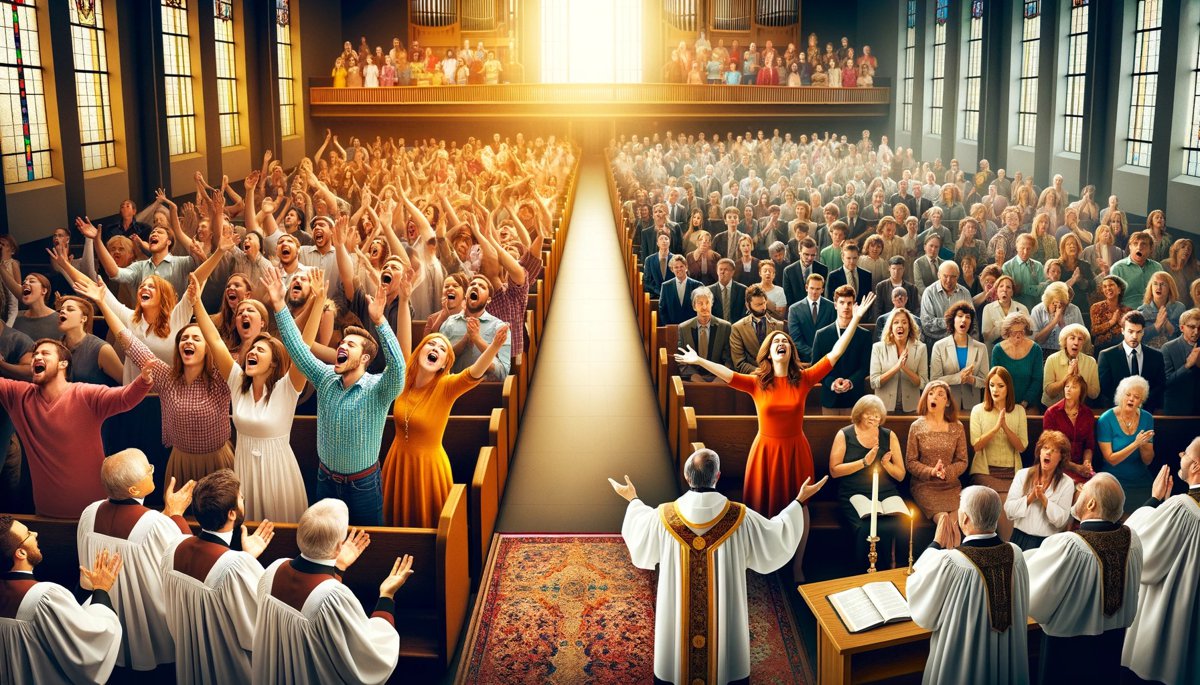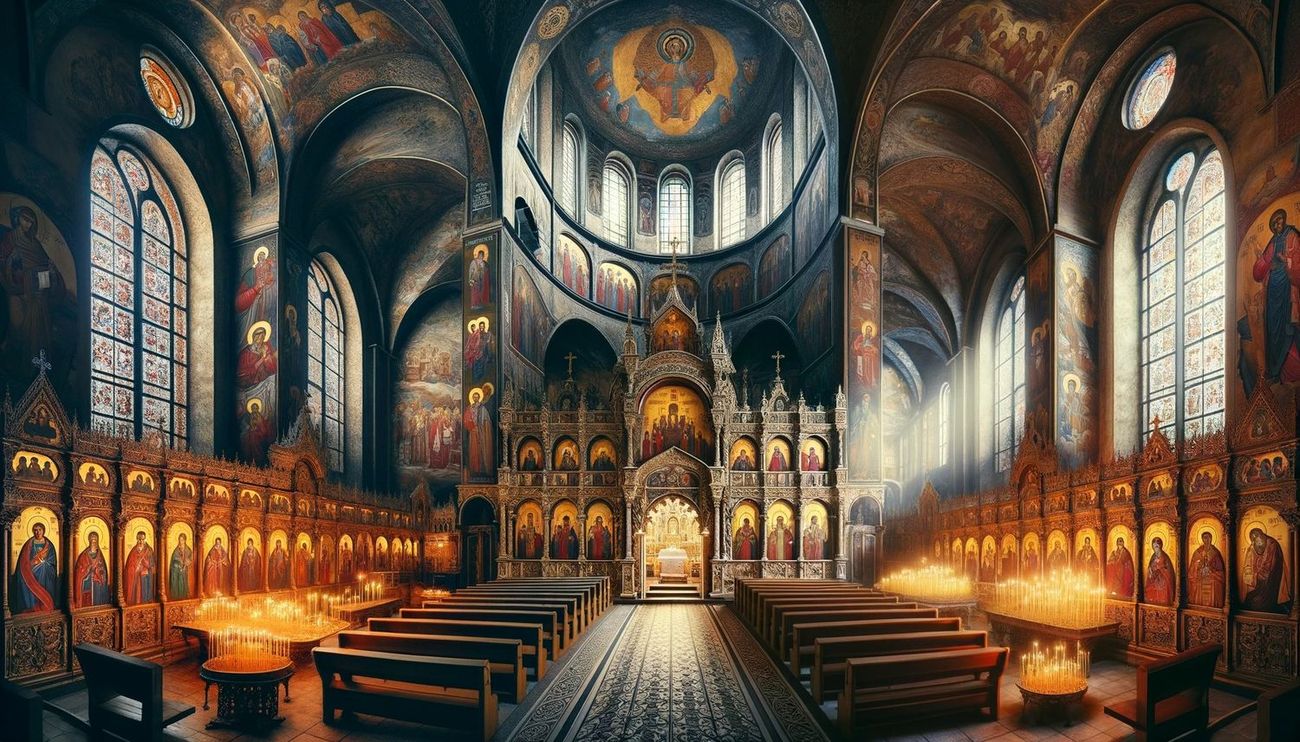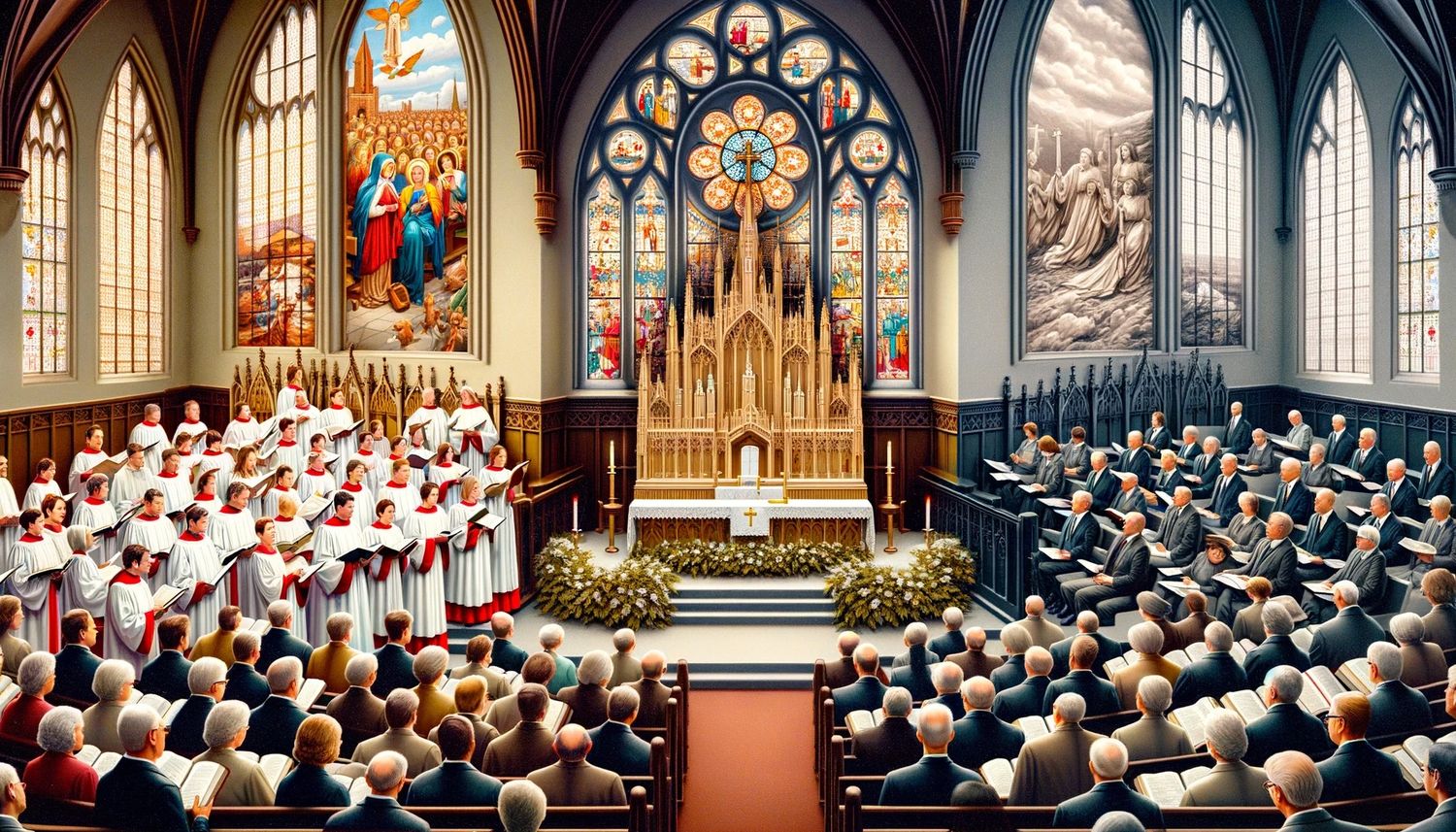Home>Theology and Spirituality>How Was Lutheranism Different From Catholicism


Theology and Spirituality
How Was Lutheranism Different From Catholicism
Published: February 18, 2024
Jason DeRose, Managing Editor at Christian.net, uses his expertise in religion and journalism to deepen understanding of faith's societal impacts. His editorial leadership, coupled with a strong academic background, enriches the platform’s diverse content, earning him recognition in both journalism and religious circles.
Discover the key differences between Lutheranism and Catholicism in terms of theology and spirituality. Explore the unique perspectives and beliefs that set these two branches of Christianity apart.
(Many of the links in this article redirect to a specific reviewed product. Your purchase of these products through affiliate links helps to generate commission for Christian.net, at no extra cost. Learn more)
Table of Contents
Introduction
Lutheranism and Catholicism stand as two prominent branches within the Christian faith, each with its distinct theological perspectives, traditions, and practices. The historical schism between these two traditions has significantly shaped the landscape of Christianity and continues to influence religious discourse to this day. Understanding the differences between Lutheranism and Catholicism provides valuable insights into the diverse interpretations of Christian doctrine and the evolution of religious institutions.
The emergence of Lutheranism as a distinct movement within Christianity can be traced back to the 16th century, when Martin Luther, a German monk and theologian, challenged various teachings and practices of the Roman Catholic Church. This pivotal period, known as the Protestant Reformation, marked a significant turning point in Christian history, leading to the proliferation of diverse Protestant denominations and the enduring division between Protestantism and Catholicism.
In contrast, Catholicism, with its rich historical legacy and global presence, represents one of the oldest and most influential Christian traditions. The Catholic Church's intricate hierarchy, sacramental theology, and emphasis on tradition have profoundly shaped the religious, cultural, and political landscapes of numerous societies throughout history.
As we delve into the theological disparities, ecclesiastical structures, and spiritual practices of Lutheranism and Catholicism, it becomes evident that these two traditions embody distinct approaches to faith, worship, and the interpretation of sacred scriptures. By exploring the nuanced differences between Lutheranism and Catholicism, we gain a deeper appreciation for the diverse expressions of Christian spirituality and the enduring impact of historical events on religious belief systems.
Read more: How Does Lutheran Differ From Catholicism
Historical Background of Lutheranism and Catholicism
The historical roots of Lutheranism and Catholicism intertwine with pivotal events that have shaped the course of Christianity. Catholicism, with its origins tracing back to the early Christian communities and the establishment of the papal authority in Rome, evolved into a dominant religious force across Europe and beyond. The Roman Catholic Church, with its intricate hierarchy and sacramental traditions, exerted profound influence over the spiritual, intellectual, and political realms of medieval Europe.
In contrast, the emergence of Lutheranism can be attributed to the transformative actions of Martin Luther, a German monk and theologian, during the 16th century. Luther's bold critique of certain practices within the Catholic Church, particularly the sale of indulgences and the authority of the pope, sparked a theological and ecclesiastical revolution. His famous Ninety-Five Theses, posted in 1517, served as a catalyst for the Protestant Reformation, challenging the doctrinal and institutional foundations of Catholicism.
The subsequent dissemination of Luther's teachings, supported by the advent of the printing press, fueled widespread debates and theological inquiries across Europe. This period of religious ferment led to the establishment of Lutheran churches and the gradual formation of a distinct theological tradition that diverged from certain aspects of Catholic doctrine and practice.
The Council of Trent, convened by the Catholic Church in response to the Protestant Reformation, sought to address doctrinal issues and reaffirm traditional Catholic teachings while implementing internal reforms. This council, spanning several decades in the mid-16th century, solidified the doctrinal positions of Catholicism and delineated its differences from the emerging Protestant movements, including Lutheranism.
The historical backdrop of Lutheranism and Catholicism thus reflects a dynamic interplay of theological dissent, ecclesiastical realignments, and the enduring impact of religious schisms. These historical trajectories have profoundly influenced the development of Christian theology, ecclesiastical structures, and religious identities, shaping the diverse tapestry of Christian traditions that persists to this day.
Theological Differences
The theological disparities between Lutheranism and Catholicism encompass a wide array of doctrinal, soteriological, and ecclesiological aspects that have contributed to the distinct theological identities of these two Christian traditions. At the heart of these differences lie divergent interpretations of key theological concepts, including salvation, grace, sacraments, and the authority of scripture.
One of the central theological distinctions between Lutheranism and Catholicism pertains to the doctrine of justification. Martin Luther's articulation of justification by faith alone, known as sola fide, underscored the primacy of God's grace in the process of salvation. This emphasis on faith as the sole means of justification, apart from human works, challenged the Catholic understanding of salvation, which incorporates the cooperative role of human merit and sacramental participation.
Furthermore, the concept of sola scriptura, championed by Lutheranism, accentuates the authority of scripture as the ultimate source of divine revelation and theological authority. In contrast, Catholicism upholds a broader understanding of authority, acknowledging the significance of sacred tradition and the magisterium, the teaching authority of the Church, alongside scripture.
The divergent perspectives on the sacraments also delineate theological disparities between Lutheranism and Catholicism. While both traditions recognize the sacraments as sacred rites instituted by Christ, they diverge in their understanding of the sacraments' efficacy and the number of sacraments. Lutheranism affirms two sacraments, baptism, and the Eucharist, emphasizing their spiritual significance and the real presence of Christ in the Eucharistic elements. In contrast, Catholicism acknowledges seven sacraments, including penance, confirmation, and holy orders, each bearing distinct theological and liturgical significance within the Catholic sacramental framework.
Moreover, the theological differences extend to the understanding of the priesthood and the nature of the church. Lutheranism emphasizes the priesthood of all believers, affirming the universal priesthood of the baptized and the role of ordained ministers as servants of the Word and sacrament. In contrast, Catholicism upholds the hierarchical structure of the priesthood, with ordained clergy serving as mediators between God and the faithful within the sacramental and pastoral life of the Church.
These theological disparities, rooted in divergent interpretations of scripture, tradition, and ecclesial authority, have shaped the distinctive theological landscapes of Lutheranism and Catholicism, reflecting the enduring legacy of the Protestant Reformation and the historical evolution of Christian theology.
Authority and Tradition
The concepts of authority and tradition serve as pivotal points of divergence between Lutheranism and Catholicism, encapsulating fundamental differences in their ecclesiological frameworks and theological underpinnings. These disparities profoundly influence the interpretation of sacred scriptures, the exercise of spiritual leadership, and the transmission of doctrinal teachings within each tradition.
In Lutheranism, the principle of sola scriptura, or "scripture alone," assumes paramount significance in shaping the understanding of authority within the Church. This foundational tenet asserts the exclusive authority of the Bible as the ultimate source of divine revelation and theological truth. Lutherans maintain that the scriptures, comprising the Old and New Testaments, constitute the sole norm for doctrine and faith, guiding the beliefs and practices of the Christian community. This emphasis on the primacy of scripture reflects Martin Luther's conviction that the Word of God, as contained in the Bible, serves as the definitive guide for Christian faith and life.
Conversely, Catholicism embraces a broader conception of authority, acknowledging the complementary roles of sacred scripture, apostolic tradition, and the magisterium, the teaching authority of the Church. The Catholic understanding of authority encompasses the dynamic interplay between scripture and tradition, viewing both as integral components of divine revelation. Sacred tradition, comprising the teachings passed down from the apostles and the early Christian community, alongside the authoritative interpretations of the magisterium, enriches the doctrinal fabric of Catholic faith. The magisterium, vested in the pope and the college of bishops, serves as the custodian and interpreter of divine revelation, ensuring doctrinal coherence and fidelity to the apostolic deposit of faith.
Furthermore, the divergent perspectives on tradition underscore contrasting approaches to the transmission of doctrinal teachings and the interpretation of theological truths. While Lutheranism upholds the primacy of scripture and acknowledges the value of tradition insofar as it aligns with biblical teachings, Catholicism affirms the organic continuity of apostolic tradition as a vital source of doctrinal development and spiritual guidance.
The nuanced interplay between authority and tradition thus reflects the distinctive theological orientations of Lutheranism and Catholicism, illuminating the multifaceted dimensions of ecclesial governance, doctrinal authority, and the interpretive frameworks that underpin their respective religious identities.
Sacraments and Worship
The divergent perspectives on sacraments and worship constitute fundamental points of theological variance between Lutheranism and Catholicism, encapsulating distinct liturgical practices, sacramental theology, and the spiritual significance attributed to these sacred rites within each tradition.
In Lutheranism, sacraments are viewed as sacred rituals instituted by Christ, conveying God's grace and fostering spiritual nourishment within the faith community. Lutherans affirm two primary sacraments: baptism and the Eucharist (also known as the Lord's Supper or Holy Communion). Baptism, regarded as a sacrament of initiation, symbolizes the incorporation of individuals into the body of Christ, signifying spiritual rebirth and the forgiveness of sins. The Eucharist, central to Lutheran worship, emphasizes the real presence of Christ in the consecrated elements of bread and wine, underscoring the spiritual communion with the living Christ and the reception of divine grace through the partaking of the sacramental elements.
In contrast, Catholicism recognizes seven sacraments, each bearing distinct theological and liturgical significance within the Catholic sacramental framework. In addition to baptism and the Eucharist, Catholic sacraments include confirmation, penance, anointing of the sick, holy orders, and matrimony. These sacraments, considered efficacious signs of grace, play a pivotal role in the spiritual life of Catholics, marking significant milestones and providing channels for the reception of divine grace in various life circumstances.
The divergent perspectives on the sacraments reflect nuanced theological differences in the understanding of their efficacy, symbolism, and liturgical celebration. While Lutheranism emphasizes the spiritual significance of baptism and the Eucharist as means of grace and spiritual nourishment, Catholicism embraces a broader sacramental framework, encompassing additional rites that contribute to the spiritual formation and pastoral care of the faithful.
Furthermore, the liturgical expressions of sacraments and worship in Lutheranism and Catholicism manifest distinctive ceremonial practices, liturgical aesthetics, and theological emphases. The worship services in Lutheranism often feature a blend of traditional hymnody, liturgical elements, and the proclamation of the Word, fostering a sense of communal participation and reverence for the sacramental life of the Church. In Catholic worship, the celebration of the Eucharist, or Mass, assumes central importance, characterized by elaborate liturgical rituals, sacred music, and the veneration of saints and sacred traditions, reflecting the rich tapestry of Catholic liturgical heritage.
The nuanced differences in sacramental theology and worship practices underscore the diverse expressions of faith and spiritual devotion within Lutheranism and Catholicism, reflecting the enduring legacy of historical developments and theological distinctives that have shaped the religious identities of these two Christian traditions.
Clergy and Church Structure
The divergent perspectives on clergy and church structure between Lutheranism and Catholicism illuminate fundamental disparities in ecclesiastical governance, pastoral ministry, and the organizational frameworks that underpin the spiritual life of each tradition.
In Lutheranism, the concept of the priesthood of all believers assumes central significance, emphasizing the universal vocation of the baptized faithful to serve as ministers within the body of Christ. This theological tenet underscores the communal priesthood shared by all believers, highlighting the spiritual equality and shared responsibility in the proclamation of the Gospel and the exercise of spiritual gifts. While Lutheranism acknowledges the ordained ministry as essential for the administration of the sacraments and the proclamation of the Word, it upholds a decentralized ecclesiastical structure, allowing for a degree of autonomy and congregational governance within individual Lutheran churches. This emphasis on the priesthood of all believers fosters a sense of communal participation and shared ministry, reflecting the egalitarian ethos that permeates Lutheran ecclesiology.
Conversely, Catholicism upholds a hierarchical structure of clergy, characterized by the ordained priesthood, episcopal oversight, and the papal primacy. The Catholic Church's ecclesiastical governance is marked by a clear delineation of roles and authority, with ordained clergy serving as mediators between God and the faithful within the sacramental and pastoral life of the Church. The hierarchical structure, culminating in the papal office, embodies the principles of apostolic succession and magisterial authority, ensuring doctrinal unity and pastoral oversight across the global Catholic communion. This centralized model of church governance reflects the emphasis on apostolic tradition, ecclesial authority, and the preservation of doctrinal orthodoxy within Catholic ecclesiology.
Furthermore, the divergent perspectives on church structure and clerical roles manifest in contrasting approaches to pastoral ministry, liturgical leadership, and the exercise of spiritual authority. While Lutheran clergy are often granted a degree of autonomy in their pastoral duties, reflecting the congregational polity prevalent in many Lutheran churches, Catholic clergy operate within a more centralized framework, adhering to the directives and canonical norms established by the magisterium. The distinct roles and functions of clergy within each tradition reflect the theological emphases, ecclesiastical structures, and historical developments that have shaped the ecclesial identities of Lutheranism and Catholicism.
The nuanced differences in clergy and church structure underscore the diverse expressions of ecclesiastical governance, pastoral ministry, and the organizational dynamics that define the spiritual life of Lutheranism and Catholicism, reflecting the enduring legacy of historical trajectories and theological distinctives that have shaped the religious identities of these two Christian traditions.
Conclusion
In conclusion, the theological disparities, ecclesiastical structures, and spiritual practices that distinguish Lutheranism from Catholicism reflect the enduring legacy of historical events, theological developments, and ecclesial trajectories that have shaped the religious identities of these two Christian traditions. The Protestant Reformation, catalyzed by Martin Luther's bold critique of certain practices within the Catholic Church, engendered a theological and ecclesiastical revolution that gave rise to the distinct tradition of Lutheranism. This pivotal period of religious ferment not only precipitated the schism between Protestantism and Catholicism but also engendered enduring theological differences that continue to define the doctrinal landscapes of these traditions.
The theological differences between Lutheranism and Catholicism, encompassing divergent perspectives on justification, the authority of scripture, sacraments, and the nature of the priesthood, underscore the multifaceted dimensions of Christian theology and soteriology. Lutheranism's emphasis on sola fide and sola scriptura, alongside its affirmation of two sacraments and the priesthood of all believers, reflects a distinct theological orientation that diverges from certain aspects of Catholic doctrine and practice. Conversely, Catholicism's broader sacramental framework, hierarchical priesthood, and the interplay between scripture, tradition, and magisterial authority exemplify the rich theological tapestry that characterizes the Catholic tradition.
Furthermore, the divergent perspectives on authority, tradition, sacraments, worship, clergy, and church structure illuminate the diverse expressions of faith, ecclesiastical governance, and spiritual devotion within Lutheranism and Catholicism. These nuanced differences underscore the enduring impact of historical developments, theological distinctives, and ecclesial trajectories that have shaped the religious identities of these two Christian traditions.
By comprehending the nuanced theological disparities and ecclesiastical dynamics that distinguish Lutheranism from Catholicism, individuals gain valuable insights into the diverse interpretations of Christian doctrine, the evolution of religious institutions, and the enduring impact of historical events on religious belief systems. The historical and theological legacies of Lutheranism and Catholicism continue to enrich the tapestry of Christian spirituality, fostering a deeper appreciation for the multifaceted expressions of faith and the enduring significance of religious diversity within the Christian tradition.




